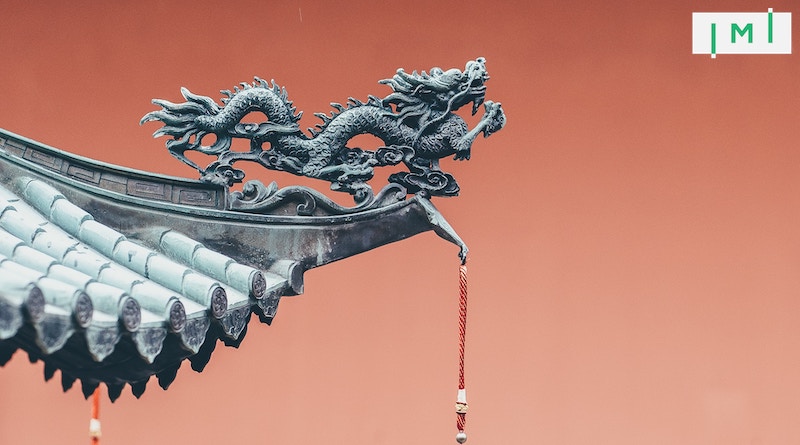What You Need to Know About China’s Investment Migration Market in 2023: Wailian, Crackdowns, and Surging Demand

Mr. Lu’s Tea Leaves
With Luc Lu
A seasoned veteran of the Chinese RCBI industry keeps readers abreast of overarching trends in the world’s biggest investment migration market.
For those following the Chinese investment migration market, August 2023 marked a month of disputes and hotspot events. One particular piece of explosive news captured the rapt attention of practitioners: The Wailian raids. As soon as the story broke, I began receiving a large volume of questions about the matter, not only from my partners in the investment migration market but also from large international media outlets. Rather than individually responding to each of those queries, I will outline my thoughts on the matter here in IMI.
Incident: Shanghai Police build case around alleged RMB 100M circumvention of foreign exchange restrictions
As revealed by Shanghai Police, Linda He (President) of Wailian Group and her employee, surnamed Sun, sought unlawful gains by illegally collecting RMB in China and offering foreign exchange abroad to their clients when rendering immigration services to them. Another three employees, Wan, Gao, and Jiang, had purportedly committed the crime of providing illegal foreign exchange for others by introducing a shadow bank. He and Sun are in criminal detention charged with economic crimes, while the other three have been released on bail pending trial.
First big question: Will the Chinese government tighten its regulation and control of the investment migration industry, or even take drastic measures to prevent Chinese investor migration?
The Chinese investment migration market is more than three decades in the making. Since its inception, as ordered by the Chinese Government, it has been subject to the Exit and Entry Administration Bureau under the Ministry of Public Security and State Administration for Industry and Commerce of the People’s Republic of China.
Later, the Exit-Entry Administration of the People’s Republic of China came into existence and took over the functions of the Ministry of Public Security. Such a dual control regime clearly shows the attitude of the authorities: The State Administration for Industry and Commerce plays the role of regulating the compliance and orderly operation of investment immigration entities, while the Exit-Entry Administration aims to undertake the management of services for Chinese citizens (namely, applicants).
Simply put, among the above-mentioned two state agencies, one regulates investment migration entities, and the other regulates the investor migrants themselves (Chinese citizens).
The Wailian case, from the start, was brought against the investment migration company. Therefore, it should not be interpreted as the Chinese government attempting to close the emigration channels for Chinese investor migration clients.
There is no denying that, with the development of China’s investment migration market, authorities are improving and tightening the control of this industry. To some extent, this is what Chinese investment migration entities and program-side partners looking to enter the Chinese market have to adapt to. The idea of “compliance and adaption to national conditions” is the key to surviving in the Chinese investment migration market going forward.
Second big question: Will Shanghai police’s capture of applicants’ information in the name of investigation set off a “revenge” on investor migrants?
The moves around Wailian have given rise to serious concerns among Chinese applicants who have submitted or are submitting applications. Such concerns are also prevalent among Chinese industry practitioners. A crisis sufficient to destroy Chinese investment migration firms is brewing.
While the Wailian case is not unprecedented, it is probably the most attention-grabbing example because of the firm’s size and reputable position in the market.
Some observers, like David Lesperance in his Reasonable Doubt column here in IMI, have postulated that Chinese authorities are likely to use the client records gathered during the Wailian raid (he refers to it as “striking intelligence gold”) to launch wider investigations into the investor migrant clients of other companies.
But for the Chinese authorities, is it really necessary to raid a company like Wailian to get the materials needed to investigate more Chinese investor migrants?
My answer is that it is obviously unnecessary. There are so many much easier, lower-profile ways for Chinese authorities to obtain this type of information and materials.
From the early days of the Chinese investment migration industry, each licensed immigration firm has had to report its client list and contracts to its superior department in charge. Besides, police certificate issuance and notarization of relevant documents, core steps in the immigration application process, already serve as means of information collection.
In other words, there is no need for Chinese authorities to take away client information by force judicial procedure.
When applying for investment migration programs, Chinese citizens often break the rules, either severely or lightly, to a greater or lesser extent. As anyone dealing in the Chinese market doubtless knows, individuals may send no more than US$50,000 a year abroad. Despite this limitation, hundreds of thousands of Chinese nationals have acquired residency and citizenship through investments far exceeding that amount over the last several decades.
This phenomenon is not limited to the investment migration market, of course. In reality, all sectors related to cross-border investment and services are inevitably plagued by this issue. Beyond question, the demands of applicants and the development of the investment migration entities go beyond the reach of Chinese authorities and management regimes. What follows is the continuous improvement of the regime, and it is understandable to see the tightening of control.
Chinese investor migration applicants are far less worried about information being leaked to the authorities than about the safety of their wealth.
The implementation of the “Golden Tax 4th Phase” (a tool designed to improve the efficiency of tax administration, enhance the level of tax collection and administration, and realize the automation of tax administration) in China and increasing economic downturn risks will provoke a great chain reaction.
The redistribution of wealth is part of the implementation of the “common prosperity” goal. Chinese HNWIs, as the beneficiaries of rapid economic development, are switching their focus from how to make money to how to preserve assets. This is also the development direction of the tax planning-oriented investment migration industry, which is the reason we are increasingly seeing the IM industry’s integration with adjacent lines of business, like family offices.
Third big question: Does the Walian case mean international IM firms will now be barred from entering the Chinese market?
This is a highly controversial topic. At the early stage of its development, China’s investment migration market usually used the “Intermediary License for Entry and Exit Services for Private Purposes” (hereafter referred to as ‘license’) as an industry access condition.
At the time, to enter the Chinese market, international institutions had no choice but to work with Chinese immigration firms to develop business and earn profits. With Chinese authorities canceling the license regime in November 2018, more and more Chinese and overseas firms started entering the fiercely contested market. Most of them are no longer satisfied with the B2B model and have begun to switch to direct-selling models one by one.
So far, this new dynamic has given rise to several interesting phenomena in the Chinese market:
Become an IMI Pro today and get:
- Your IMI Pro profile page in IMI
- Access to the IMI Data Center
- Access to all our Private Briefings
- Unlimited articles
- All IMI Research Unit reports
- +++
- Large-scale firms are disintegrating faster and faster, while small-scale or workshop-style immigration entities are emerging rapidly.
- International immigration firms withdraw from the Chinese market one by one due to a failure to adapt to the local conditions.
- Powerful local immigration firms have switched to searching for opportunities in the upper stream of the immigration market and are accelerating their entry into the international market.
- Industry activities and information exchanges became more private and restricted as authorities started to crack down on summits and events.
All these challenges notwithstanding, many Chinese immigration firms survived the market’s “great hibernation.”
The announcement of the pandemic’s end in China saved immigration practitioners and entities, many of which were at the end of their tethers, from collapse. Now, the industry is back and demand is stronger than ever. Application volume from all walks of life is up, and the emigration boom is expected to continue.
In my view, now is a good time to expand our perspective on China’s emigration market from a focus on individuals to one focused on enterprises. China is unlikely to be separated from the global market, and companies will need mobility-related services. If we concentrate on enterprise-level mobility needs, many obstacles can be overcome with ease.
Globally, enterprises not only provide a lot of taxes to satisfy government funding needs but also create local job opportunities and social dividends. As a consequence, almost all the countries that have shaken off the pandemic aspire to attract overseas investment to the greatest possible extent, particularly in the form of corporate investment.
Keep in mind that, in China, most investor migrants are also entrepreneurs. Their incredible wealth stems from years of company operations and retained earnings. And where previously they were chiefly concerned with internationalizing themselves as individuals while making corporate profits in China, they are now increasingly preoccupied with internationalizing their businesses, the better to protect and grow their assets.
The boom of the Singaporean immigration market is a testament to this trend. A great deal of wealth has recently been transferred to Singapore, where the establishment of family offices has also created substantial job opportunities in the financial industry. Moreover, newly established companies were highly concentrated in the high-tech, fin-tech, and medical sectors.
Rather than running up against maladjustment to local conditions in China and taking the risk of directly engaging in the Chinese market, international investment migration institutions ought to seek better business models and partners to become “bigger and stronger” in China through an indirect, more low-key approach.
The Chinese investment migration market, far from being dead, is hotter than ever before. What’s changed is the urgency with which the country’s HNWIs are now seeking solutions.
More from Mr. Lu’s Tea Leaves:
Luc Lu is a decade-long veteran of the Chinese Investment Migration Industry, founder of several firms in that market, and official partner of Investment Migration Insider, responsible for China-based activities.



